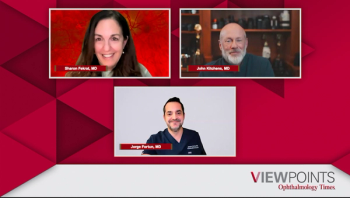
Accelerating eye health innovation through CCOI – Stanford Summit

Jim Mazzo is among the presenters who will highlight the need to break silos and accelerate eye health solutions at the Collaborative Community on Ophthalmic Innovation (CCOI) meeting at Stanford University on July 23, 2025.
On July 23, 2025, the Ophthalmic Innovation Symposium and Workshop 2025: From Concept to Clinic will take place at Stanford University in Palo Alto, California. Presented by the Bay Area Ophthalmology Consortium and the Byers Eye Institute at the Stanford University School of Medicine—in conjunction with the Collaborative Community on Ophthalmic Innovation (CCOI)—this event is set to unite leaders from across the eye care ecosystem to accelerate impactful innovation.
Led by Malvina Eydelman, MD, chief executive officer, the CCOI portion of the program will explore a wide range of critical themes. Among the presenters is Jim Mazzo, executive chairman of Neurotech Pharmaceuticals, who recently sat down with Ophthalmology Times to offer a preview of what his presentation will focus on regarding accelerating eye health innovations through CCOI. “It’s never dull in our space,” Mazzo quipped, “and I would say that is true—my forty-seventh year in this space.”
Mazzo will spotlight a pressing paradox: despite remarkable strides in diagnostics and surgical precision, global blindness continues to rise. “If I was a patient—which I am—why is blindness still a tremendous problem for us?” he asked. His answer points to the systemic siloing of innovation. “You’ve got researchers, you’ve got clinicians, you’ve got engineers, and obviously the end user, the patient, all kind of working in isolation.”
CCOI, Mazzo highlighted, is stepping in to unify stakeholders through a “global inclusive and transparent ecosystem,” one that harmonizes regulators, payers, innovators, and clinicians. “Align the incentives,” he said. “When incentives are aligned in any business, it’s dramatic change.”
The summit will also highlight emerging enablers like AI, real-world evidence, and smart diagnostics. “We have these unbelievable, as I call them now, smart diagnostics,” Mazzo noted, “and they need to be embedded in these ecosystems.”
Ultimately, Mazzo calls on all ophthalmology stakeholders—policymakers, startup founders, researchers, and patient advocates—to engage with CCOI’s mission. “We can't solve these vision challenges with yesterday’s innovation model,” he said. “If we don’t break these barriers and move these silos together, we’re never going to get to what the patient requires today.”
Newsletter
Don’t miss out—get Ophthalmology Times updates on the latest clinical advancements and expert interviews, straight to your inbox.












































